Probably the most commonly known and recognized member of the Nettle Family (Urticaceae) is stinging nettle (Urtica dioica). Many folks know of its medicinal and edible qualities and enjoy foraging for it. Stinging nettle can be found throughout North America, Europe, Asia and North Africa.
Less well known is wood nettle (Laportea canadensis) which is native to the eastern half of North America. It, too, is prized by foragers as food and medicine.
The third plant to review in the nettle family is clearweed (Pilea pumila) — also found in eastern North America. I have read that it is edible and people have foraged and eaten this plant — mistakenly thinking they were harvesting stinging nettle.
So let’s look at some commonalities and differences between these three plants. (If you click on the images below, you will be taken to a larger view of each of them.) All three plants are in the Nettle Family. And each has been assigned to a different genus (Urtica, Laportea and Pilea).
When we look at the leaves we can see how very similar they are in shape. Clearweed’s leaves are smooth and somewhat glossy while both stinging nettle and wood nettle have “rougher” looking leaves.
As you can see in the wood nettle photo above (taken in early spring), the stems and underside of the leaves are covered with stinging hairs. Stinging nettle has similar stinging hairs along its stems.
Clearweed does not have any stinging hairs at all.
Later in the year, the clearweed stem becomes more obviously translucent (“clear”) and flexible.
Since both stinging nettle and wood nettle look so much alike — and both protect themselves with stinging hairs — how can we tell these two plants apart? The most obvious difference is the orientation of the leaves along the stems. Stinging nettle’s leaves are opposite each other.
Wood nettle’s leaves alternate on the stem.
9/3/12: Here’s a comparison with a fourth member of the nettle family.

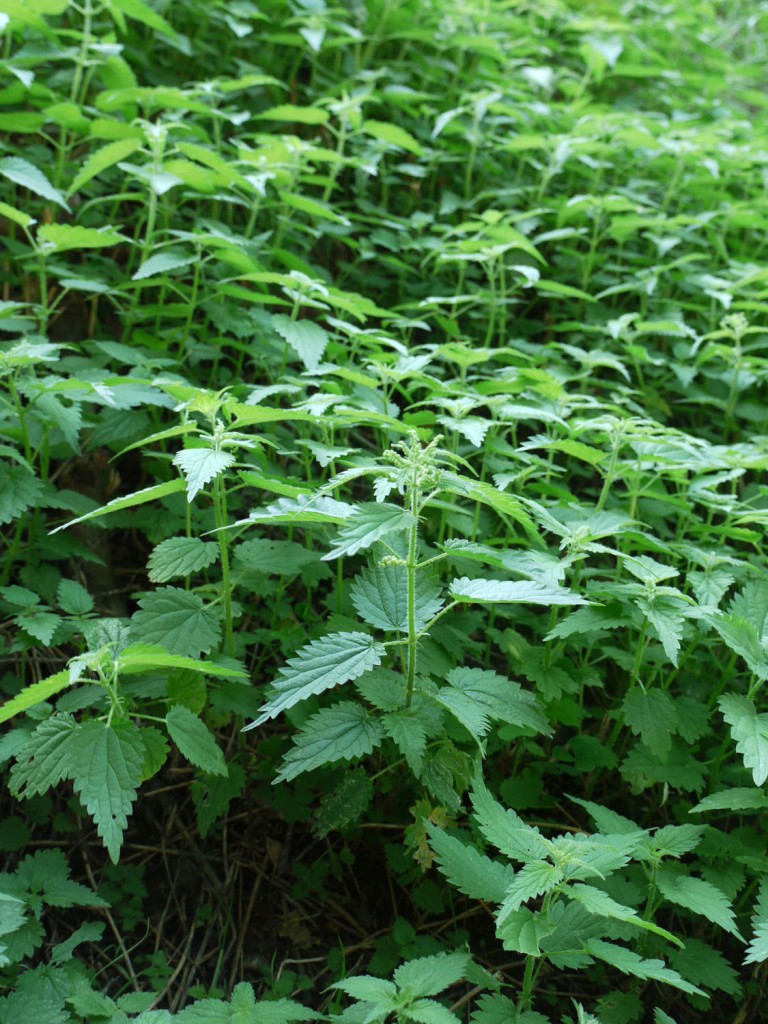
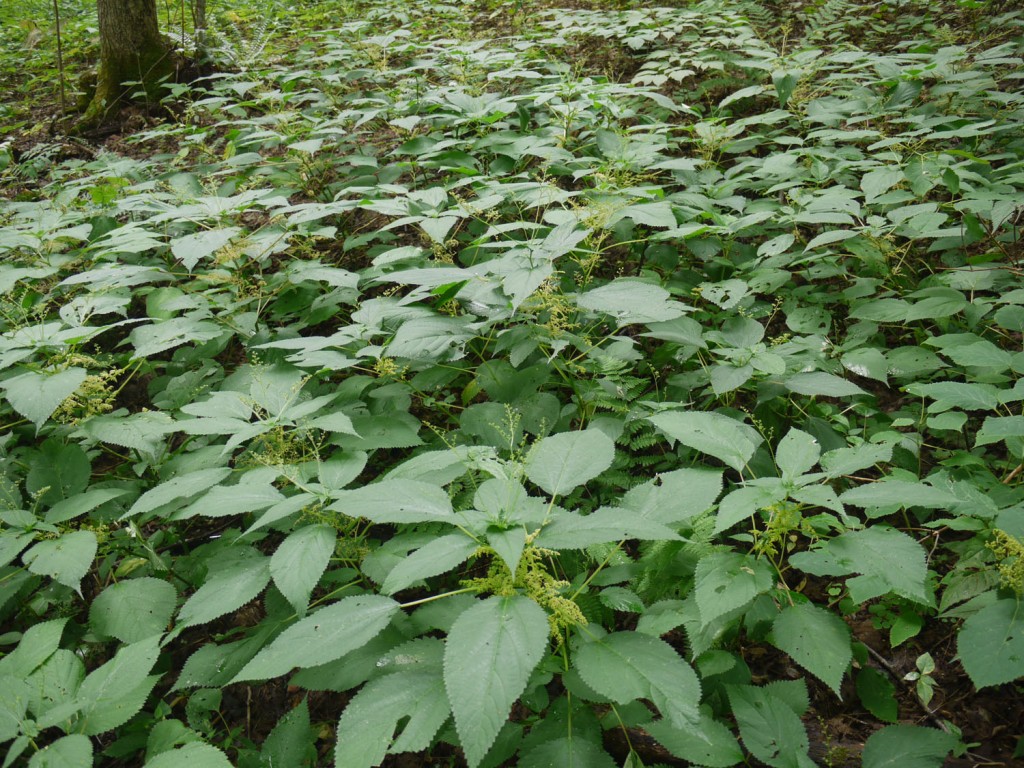

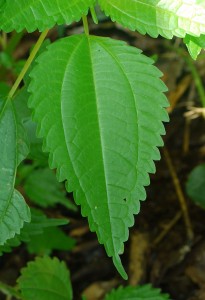
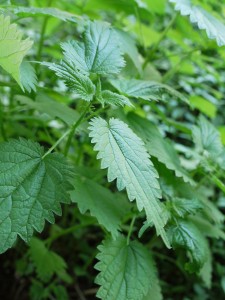
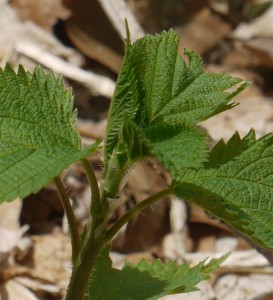
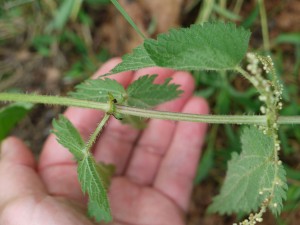
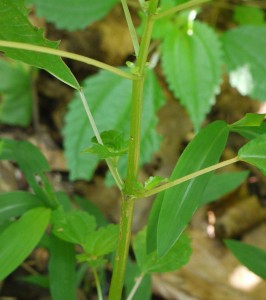

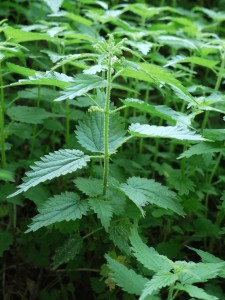

thanks for the info… I think I found clearweed… thought it was a nettle but couldn’t figure out why I wasn’t getting stung… now I know!
Pingback: Another nettle | Identify that Plant
Pingback: Stinging Nettle - ONE Clip Video
Pingback: Stinging Nettle - VideoClip4U
Thank you for the clear, useful information. Do you know if nettles are toxic to cats or dogs?
I do not know about toxicity. I suspect they are not toxic to animals — although they probably wouldn’t eat them because of the “stinging” quality of the plant.
I supposed what I have in my garden is clearweed. The leaves are the same with the stinging nettle, only that they don’t have the thing that stung. I gave some to my pet dog and ate it! I boil some leaves and drink as a tea, ate the boiled leaves. I felt good after a day and pain of arthritis is gone! Amazing!
I have stinging nettle on my property and I went out to harvest some today and now it is clear weed. I use to mow near the nettle and would get stung all the time. Today I was checking it and now it is all clear weed growing. Wonder why the clear weed took over, but it can still be harvested and consumed.
Is their any difference between the strength of the sting from wood nettle and stinging nettle.
I’m not aware of a difference since both of them can sting equally for me. However, that may not be true for everyone.
Hi Sunshine…..just wondering what the difference between Indian Nettle and stinging Nettle….Is there such a plant or is it just where it has come from…Thankyou
I have not heard of “Indian nettle.” An internet search turned up information on wikipedia for Acalypha indica. If that if the plant you are referring to, then I recommend reviewing the wikipedia article for a description of the plant.
Pingback: Stinging Nettle—Nature’s Antihistamine Herb - Ridge Haven Homestead %
Pingback: Stinging Nettle – The Philadelphia Nature Guide